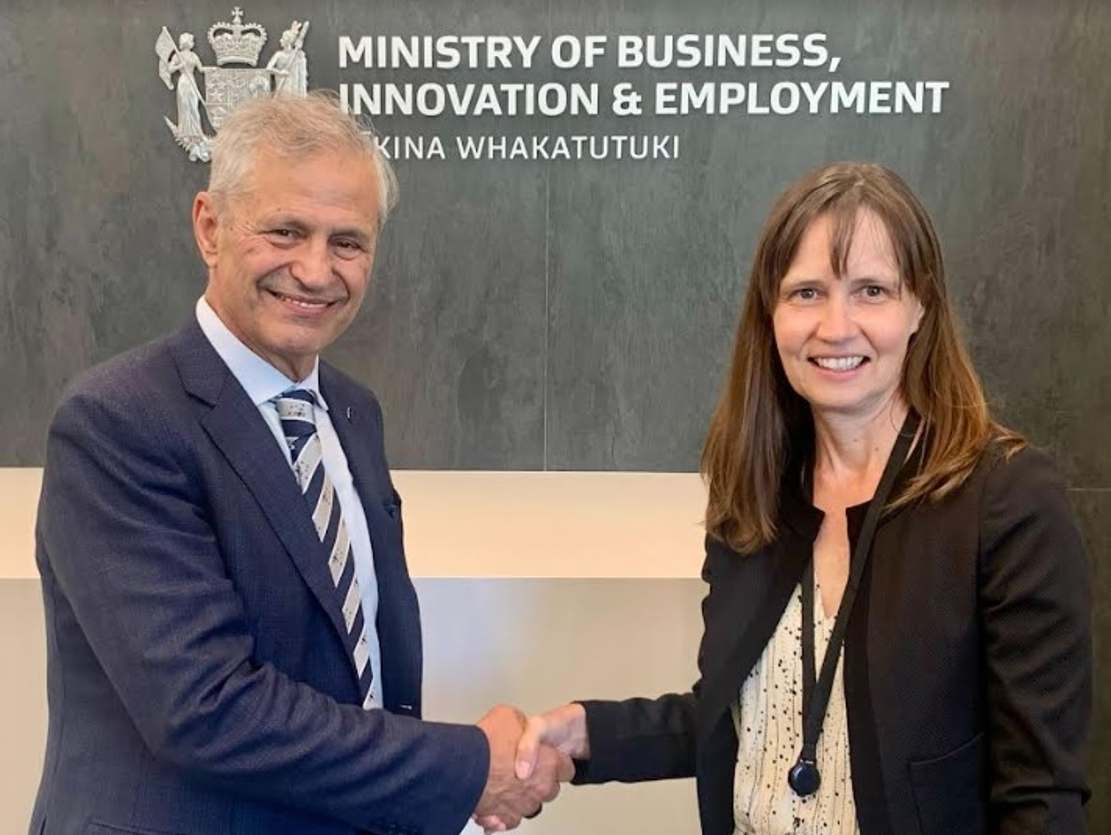SmartSat and New Zealand Space Agency collaborate on joint R&D initiatives to advance space sector innovation
SmartSat CRC & NZ Space Agency unite for space exploration growth. SmartSat, a space research centre in Australia, has announced a Memorandum of Understanding (MoU) with the New Zealand Space Agency (NZSA).
Under the new agreement, SmartSat and NZSA will collaborate to develop new capabilities and expertise in the space sector through the advancement of innovation, R&D, and workforce development.
The agreement was signed at the NZSA headquarters in Wellington by Professor Andy Koronios, SmartSat CRC Chief Executive Officer and Robyn Henderson, Acting Head of the New Zealand Space Agency.
Under this agreement, up to NZ $6 million will be made available from the NZ Government’s Catalyst Fund to support New Zealand researchers to participate in new joint research initiatives in:
- Earth Observation: covering Natural Capital, Biosecurity, Crop Health, Pasture Condition, Emission Monitoring, South Pacific Synthetic Aperture Radar and Maritime Domain Awareness. These research projects will aim to use space data to enhance decision making for land and sea-based environments.
- Space Situational Awareness: developing new techniques to monitor the orbital environment better. One example is Satping – spacecraft position and velocity and ID from the spacecraft. Another is ground-sensor data processing and visualisations for anomalies and manoeuvre detections.
- Optical Communications: joint science work on adaptive optics to explore how to coordinate a network of Australasian optical ground stations that can actively support space exploration.
SmartSat CRC Chief Executive Officer Professor Andy Koronios said, “We’re delighted to sign this agreement with the New Zealand Space Agency.”
“This partnership will enable us to join forces and harness our resources and expertise for several important projects. Earth Observation research plays a critical role in better understanding environmental challenges that pose significant risks to both our countries,”
“The agriculture sector is crucial for both Australia and New Zealand, and improving sustainable practices through pasture mapping, human activity, and emission monitoring will be vital for current and future food security,” said Koronios.
Head of the Australian Space Agency Enrico Palermo warmly welcomed the Memorandum of Understanding (MOU) signing, emphasising its significance in fostering international cooperation and advancing Australia’s endeavors in space exploration and innovation.
“This agreement reaffirms our strong partnership with New Zealand. Not only do our nations share a unique geographic position, we are also aligned when it comes to using space technology and innovation to improve life here on Earth,” he said.
This Australian Space Agency is proud to have worked with SmartSat CRC and the New Zealand Space Agency to set up this agreement, which builds on Australian Government investments in capabilities such as optical ground stations.
“Space is a global endeavour and by sharing knowledge and resources, we can create outcomes that benefit both our nations.” said Palermo.
The Memorandum of Understanding between SmartSat Cooperative Research Centre and the New Zealand Space Agency marks a significant step forward in fostering collaboration and driving innovation within the space industries of both Australia and New Zealand.
SmartSat continues building Australia’s space R&D capability.
The SmartSat Cooperative Research Centre brings together over 135 participating organisations, including national and international partners, with more than 400 researchers.
With a portfolio of over 150 R&D projects across Advanced Communication, Connectivity and IoT Technologies, Advanced Satellite Systems, Sensors and Intelligence, and Next Generation Earth Observation Data Services, SmartSat continues to contribute to building Australia’s space R&D capability.
By combining expertise and resources, both entities are poised to unlock new frontiers, advance technological capabilities, and contribute to the global space community’s collective pursuit of scientific discovery and economic growth.







